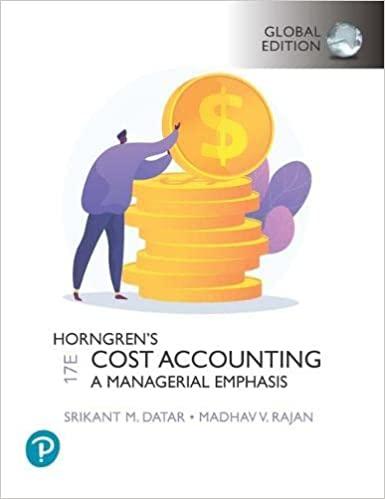Question
Sheridan Inc. had net income for the current year ending December 31, 2020 of $912,320. During the entire year, there were 507,000 common shares outstanding.
Sheridan Inc. had net income for the current year ending December 31, 2020 of $912,320. During the entire year, there were 507,000 common shares outstanding. The company had two classes of preferred shares outstanding: the Class A preferred shares were $2.00 cumulative shares of which 10,000 were outstanding, and were convertible to common shares at a rate of 1:1. There were 110,000 $6.00 Class B non-cumulative preferred shares outstanding that were also convertible at a rate of 1:1. Sheridan had outstanding a $1,000,000, 6% bond issued in 2009 that was convertible to 21,000 common shares. The company also had outstanding a $1,000,000, 4% bond issued in 2010 that was convertible to 25,000 common shares. No dividends were declared or paid this year. Sheridans tax rate is 39%.
A.) Calculate the income effect of the dividends on Class A preferred shares.
| Dividends on Class A preferred shares | $____________ |
B.) Calculate the income effect of the dividends on Class B preferred shares.
| Dividends on Class B preferred shares | $_____________ |
C.) Calculate basic earnings per share. (For simplicity, ignore the requirement to record the debt and equity portions of the convertible bond separately.) (Round answer to 2 decimal places, e.g. 15.25.)
| Basic earnings per share | $___________ |
D.) Calculate the after-tax interest paid on the 2009 bonds.
| After-tax interest on 2009 bonds converted | $____________ |
E.) Determine an incremental per share effect for 2009 bonds. (Round earnings per share to 3 decimal places, e.g. 15.257.)
| Potentially dilutive security | Incremental Numerator Effect | Incremental Denominator Effect | EPS | |||
| 2009 Bonds | $ | $ |
F.) Calculate the after-tax interest paid on the 2010 bonds.
| After-tax interest on 2010 bonds converted | $_________________ |
G.) Determine an incremental per share effect for 2010 bonds. (Round earnings per share to 3 decimal places, e.g. 15.257.)
| Potentially dilutive security | Incremental Numerator Effect | Incremental Denominator Effect | EPS | |||
| 8% Bonds | $ | $ |
H.) Determine an incremental per share effect for Class A preferred shares. (Round earnings per share to 2 decimal places, e.g. 15.25.)
| Potentially dilutive security | Incremental Numerator Effect | Incremental Denominator Effect | EPS | |||
| Class A preferred shares | $ | $ |
I.) Determine an incremental per share effect for Class B preferred shares. (Round earnings per share to 2 decimal places, e.g. 15.25.)
| Potentially dilutive security | Incremental Numerator Effect | Incremental Denominator Effect | EPS | |||
| Class B preferred shares | $ | $ |
J.) Rank the potentially dilutive securities from most dilutive to least dilutive.
(Options: Rank 1, Rank 2, Rank 3, Rank 4, Anti-Dilutive)
| 2009 bonds | ||
| 2010 bonds | ||
| Class A preferred shares | ||
| Class B preferred shares |
K.) Calculate diluted earnings per share. (Round calculations of EPS to 3 decimal places, e.g. $3.545 and provide final answer to 2 decimal places, e.g. 15.25.)
| Numerator | Denominator | EPS | |||||
| Basic | $ | $ | |||||
| Choose 1: (2009 bonds, or 2010 bonds, or Class A preferred shares, or Class B preferred shares) | |||||||
| Sub Total | |||||||
| Choose 1: (2009 bonds, or 2010 bonds, or Class A preferred shares, or Class B preferred shares) | |||||||
| Sub Total | |||||||
| Choose 1: (2009 bonds, or 2010 bonds, or Class A preferred shares, or Class B preferred shares) | |||||||
| $ | $ |
| Diluted EPS | =_____________ |
Step by Step Solution
There are 3 Steps involved in it
Step: 1

Get Instant Access to Expert-Tailored Solutions
See step-by-step solutions with expert insights and AI powered tools for academic success
Step: 2

Step: 3

Ace Your Homework with AI
Get the answers you need in no time with our AI-driven, step-by-step assistance
Get Started


